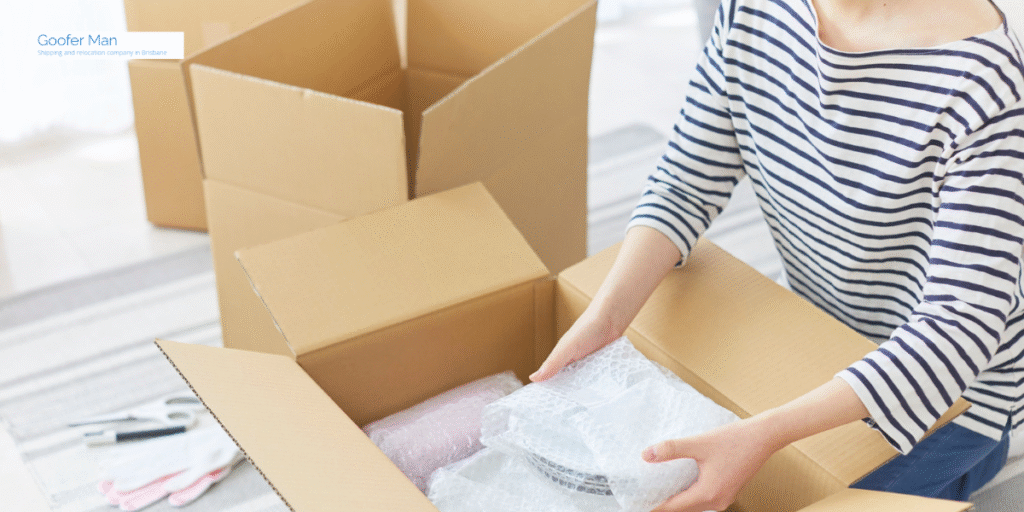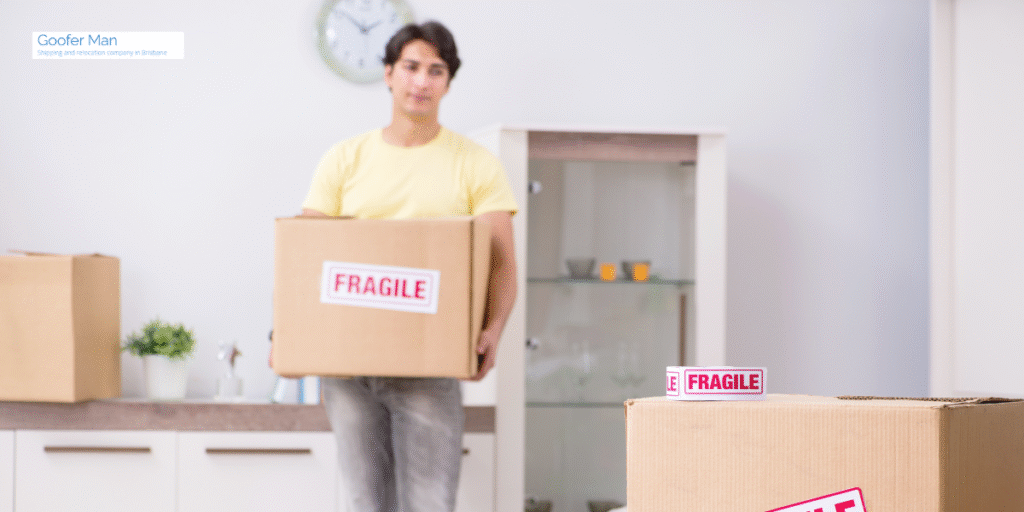Imagine that you’re unpacking your grandmother’s china at your new destination, only to find shattered pieces after spending thousands on international shipping. If this sounds like you, you’re not the only one faced this stress.
Also Read: Why Use Uhoebeans Software in Business Guide 2025
Most people buy bubble wrap and packing materials but miss three timing mistakes that cause 70% of fragile item damage during shipment. At Goofer Man, we’ve helped Brisbane families ship fragile items to over 80 countries, and we know what protects your valuables (and what leads to expensive insurance claims).
In this guide, we’ll cover:
- When to start packing fragile items and why timing is important
- Room-by-room strategies for protecting plates, electronics, and valuables
- The right materials that work for international shipment
- Moving day coordination and what happens at customs
From planning a permanent move to a temporary trip overseas, this checklist simplifies the packing process.
Read on to learn how proper planning protects your belongings from Brisbane to any destination in the world.
When to Start Packing Fragile Items (And What Happens If You Don’t)
The best time to start packing fragile items is 6-8 weeks before your moving day, giving you enough time to gather the right materials and wrap everything without rushing.

You might be wondering when to start the packing process. Start wrapping fragile items 6-8 weeks before your trip, not the 2-3 weeks you’d use for regular belongings like clothing or towels.
The reason is simple: fragile items need more attention, better materials, and careful planning that you can’t squeeze into a rushed timeline.
Rushing leads to hasty wrapping with wrong packing materials, missed labeling, and no time to source quality double-walled boxes from stores in Australia. Here’s what happens when you wait too long: You grab whatever boxes you find at the local shop, throw bubble wrap around a few plates, and hope for the best.
Then you miss the weight limits because you didn’t have time to use a luggage scale. After that, customs handlers toss your boxes around, and the poor packaging can’t protect what’s inside.
Finally, your insurance claim gets denied because you can’t prove you packed things correctly. Last-minute planning causes damaged valuables, failed insurance claims, and the stress of replacing family heirlooms after delivery.
For example, one customer shipped their grandmother’s plates three days before departure and lost half to breakage during air freight. The insurance company took one look at the packaging photos and refused to cover the cost because the plates were stacked flat instead of vertically.
Pro Tip: Create a packing timeline and stick to it. Mark your calendar for 8 weeks out and start gathering supplies. By week 6, you should have all your boxes and materials ready. Week 4 is when you begin wrapping room by room. This schedule keeps you ahead of the stress and gives you time to fix any problems before moving day arrives.
Room-by-Room Packing Strategy for Fragile Items
Kitchen items make up the majority of damage claims in international moves, mostly because people pack plates incorrectly. Let’s walk through each room and learn how to protect what’s inside.
Kitchen: The Vertical Plate Method
In the kitchen, pack your plates vertically like records rather than flat. We suggest slipping packing paper between each plate, wrapping the whole stack in bubble wrap, and sliding it into a box that fits snugly. Any gaps? Fill them with crushed paper so nothing shifts around during the trip.
However, did you ever think why vertical packing helps? Well, when plates sit flat and you stack other items on top, the weight compresses and creates cracks. But when plates stand on edge, the pressure distributes evenly along the strongest part of the dish (the rim, not the flat surface).
Living Room: Documentation and Original Packaging
For the living room, photograph your electronics and artwork before wrapping them in case you need to file insurance claims later. Store cables in separate bags and label them so you’re not searching through boxes at your destination trying to figure out which cord goes where.
Drawing from our experience with customers moving to countries across the world, we’ve seen this method protect even the most delicate items like vintage stereos and framed paintings.
Just make sure you keep original boxes for electronics when possible. Manufacturers design these boxes with custom foam inserts that fit the product perfectly, and no amount of bubble wrap can match that level of protection for laptops or monitors.
Bedroom: Small Items and Valuables
Use packing cubes for smaller bedroom items like jewelry boxes, keeping them separate from larger wrapped pieces. If you’re carrying valuables on the trip, keep them in your suitcase rather than shipping them.
This works well for things like watches, important documents, or small family heirlooms that you can’t risk losing to a shipping delay or customs inspection.
Pack one room at a time and label each box with the room name and a list of contents. When you arrive at your new address, you’ll thank yourself for the clear organisation instead of opening 40 mystery boxes looking for your coffee mugs.
Materials Checklist and What Works for Parcel Overseas
The best part about using quality packing materials is that you’ll sleep better knowing your family heirlooms won’t arrive as expensive jigsaw puzzles. Let’s break down the materials you need and which ones are worth the investment.

Boxes: Double-Walled vs Single-Walled
Double-walled boxes from Bunnings or packaging suppliers cost more but prevent crushing during multiple handling points on international shipping routes. You’ll need various box sizes depending on what you’re sending.
On the other hand, single-walled boxes work fine for lightweight items like clothes or towels, but they collapse under pressure when customs handlers stack heavier parcels on top. For fragile items, the extra cost of double-walled boxes saves you from replacing broken valuables at your destination.
Weight Limits and the Luggage Scale Trick
We recommend using a luggage scale to keep each box under 23kg for air shipment, so courier services won’t drop heavy parcels at customs. The weight influences both cost and safe handling during the trip.
Our team has seen handlers refuse boxes over 25kg, leaving them on loading docks for days until someone can sort out the logistics. Meanwhile, your shipment sits there exposed to weather and rough treatment. So, a simple luggage scale from any store in Australia costs $20 and prevents this entire problem.
What to Avoid: Common Material Mistakes
Skip newspaper for light-colored china because ink transfers, and don’t reuse old boxes with weakened corners. You’re better off spending a bit more on new materials than risking damage.
Here’s what happens with weak boxes: The corners collapse first during transport, then the sides cave in, and your contents shift around inside. Once items start moving, they bang into each other and break.
Insurance companies look at your packaging photos and refuse claims because poor materials mean you didn’t take reasonable care to protect your shipment.
Instead, invest in proper bubble wrap, packing paper, and sturdy boxes. Buy more materials than you think you need because running out halfway through packing means another trip to the store and wasted time.
Moving Day Coordination and What Happens Next
Now that you’ve packed everything the right way, let’s talk about what happens when the courier arrives on moving day.
Loading and Unloading Strategy
- Load fragile boxes last into the truck and ask for them to be unloaded first at your destination
- You want to reduce the time these boxes spend stacked under other items
- Label the top and sides of each box with “FRAGILE” and “THIS SIDE UP” so handlers know which way to carry them
Insurance and Documentation
- Insurance covers breakage during transport but not damage from poor packaging, so keep your wrapping photos for claims
- Make sure you have your tracking number and contact details for the service team
- Most insurance policies require you to report damage within 48 hours of delivery, so inspect boxes as soon as they arrive
What to Pack in Your Carry-On
- Pack essentials like medications and important documents in your carry-on bag rather than shipping them with other fragile items
- If you visit multiple countries on your trip, you’ll need these items accessible at each stop
- Things like prescription bottles, passports, birth certificates, and financial documents should travel with you, not in a shipping container
Tracking Through Customs
- Track your shipment through customs using your tracking number to see where delays happen
- Customs inspections can add 3-7 days to delivery time, depending on the country and what you’re shipping
- If customs flags your shipment for inspection, respond quickly to any requests for documentation to avoid extra storage fees
Goofer Man’s professional packing services handle all these coordination details for customers who prefer expert help instead of managing the logistics themselves.
Start Protecting Your Valuables Today
The payoff for following this checklist is opening boxes in your new home and finding everything as you packed it.
Proper timing, the right materials, and good documentation give your fragile items the best chance of arriving safely across borders. Goofer Man’s professional export packing services and experienced team remove the stress for Brisbane families and business customers shipping internationally.
Contact our team for a quote today, or visit our office in Brisbane to discuss express solutions that fit your timeline and budget.

